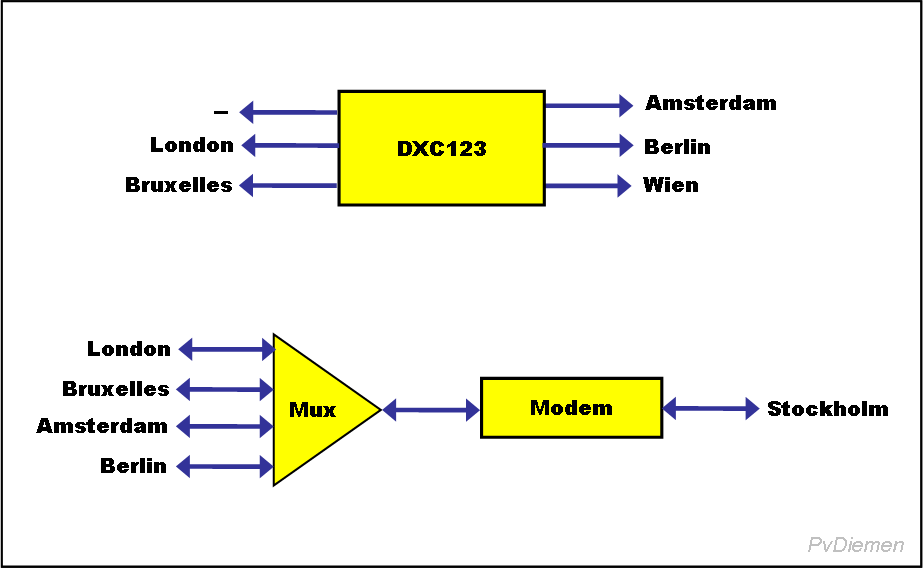
Last update PvD
2.3 EML
Element Management Layer
Overview
[M.3010] The EML manages each network element on an individual basis and supports an abstraction of the functions provided by the NE layer.
The element management layer has a set of element managers, that are individually responsible, on a devolved basis from the network management layer, for some subset of network elements.
Each element manager has the following three principle roles:
In short: Manage a Network Element as an individual component. Managing equipment and local functions. EML manages a Network Element, potentially more than one (most likely of similar type), but on individual basis.
Display a network element: node, trunk, station and connections. For small sites the display will immediately show the individual components, for large site you need a layered approach (e.g. first the functional types of components).
Managed objects: (examples)
Operations: (examples)
Function block diagram: A functional view is represented by a block diagram.
Example of function block diagram:

Function type diagram: When there are many instances of a particular type, it is useful to start with a function type diagram, i.e. there is a block for each function type, and such a block represents multiple functions of the same type.
When there are only a few instances, and all can be displayed at once, the block type diagram has no added value.
Example of function type diagram:
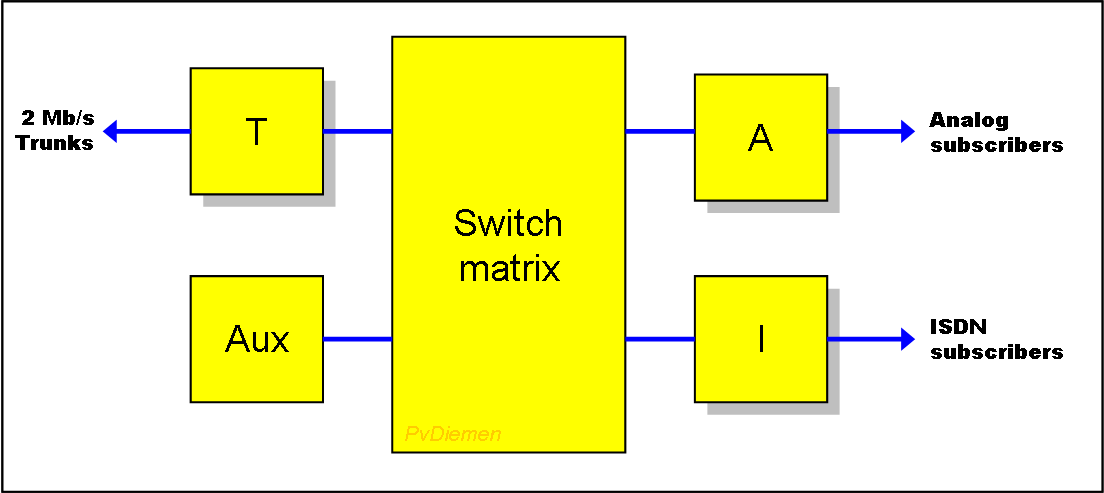
Block diagram: To identify an individual function instance, one needs to 'zoom-in'.
Example zoomed-in on 'T' blocks of above view: All individual blocks (trunk modules) are shown:
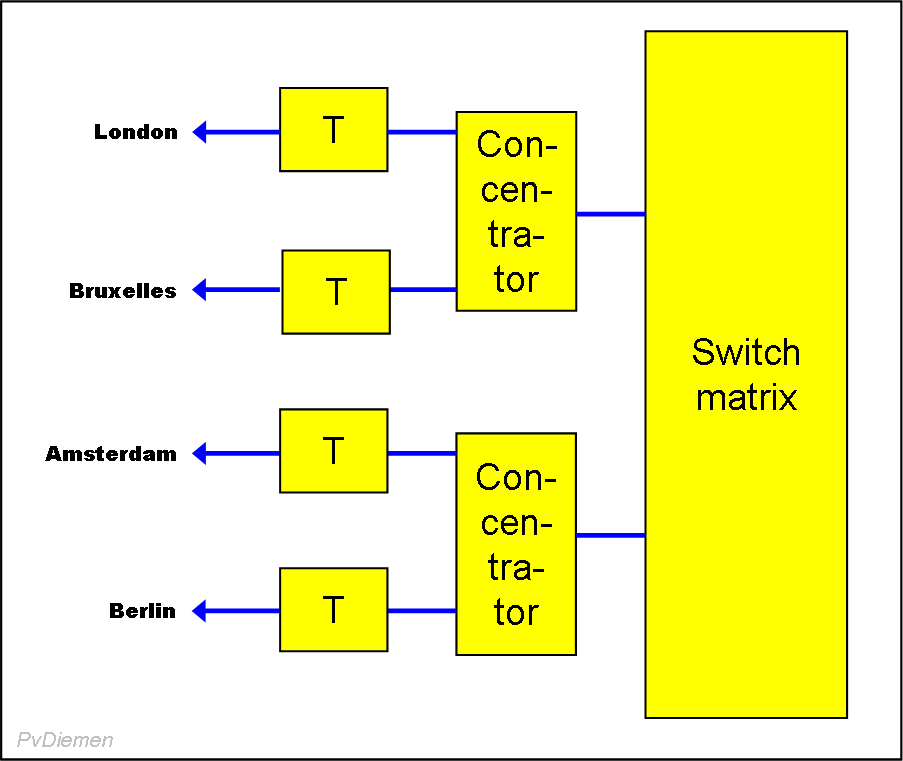
Floorplan: The physical view at EML is typically a floorplan of a site. Again, it is only useful when there are multiple racks/stacks; otherwise it can be skipped.
Example of a site floorplan:
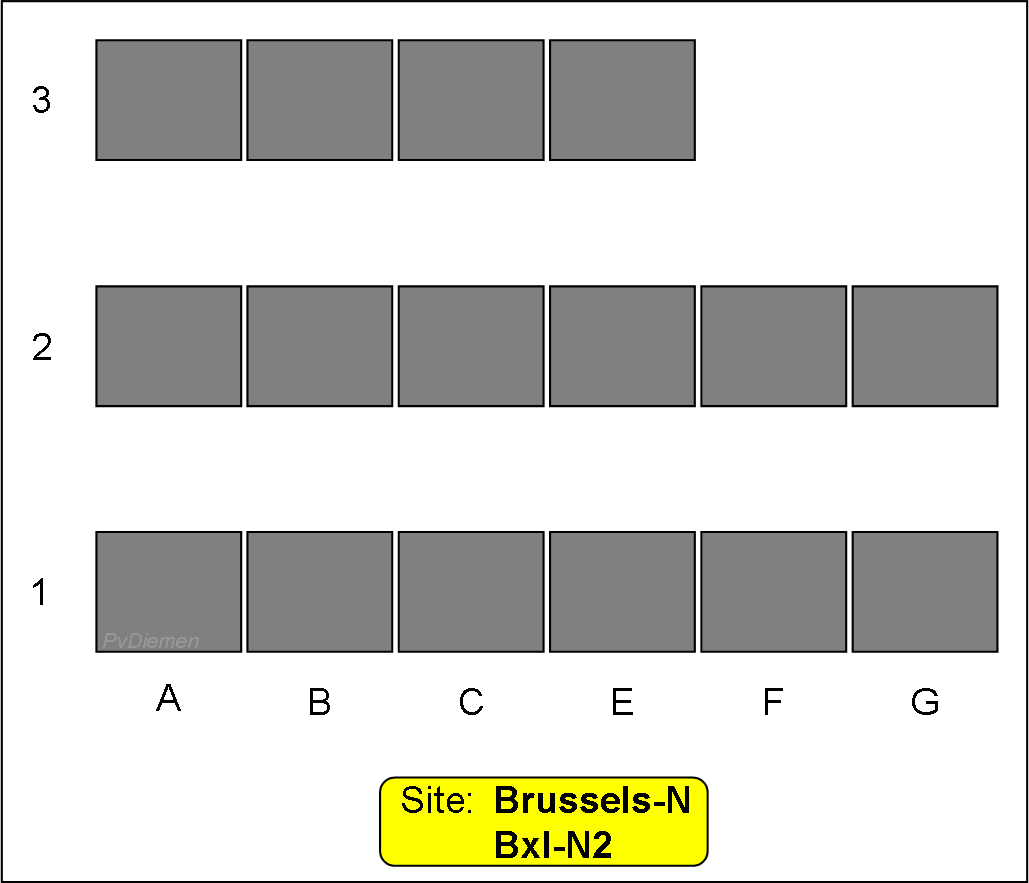
Racks: The next step is zooming-in on a particular rack (sometimes called cabinet), or equipment stack. Again, when there is only a single subrack or equipment box, this step should be skipped.
Example of a rack view and box stack respectively:
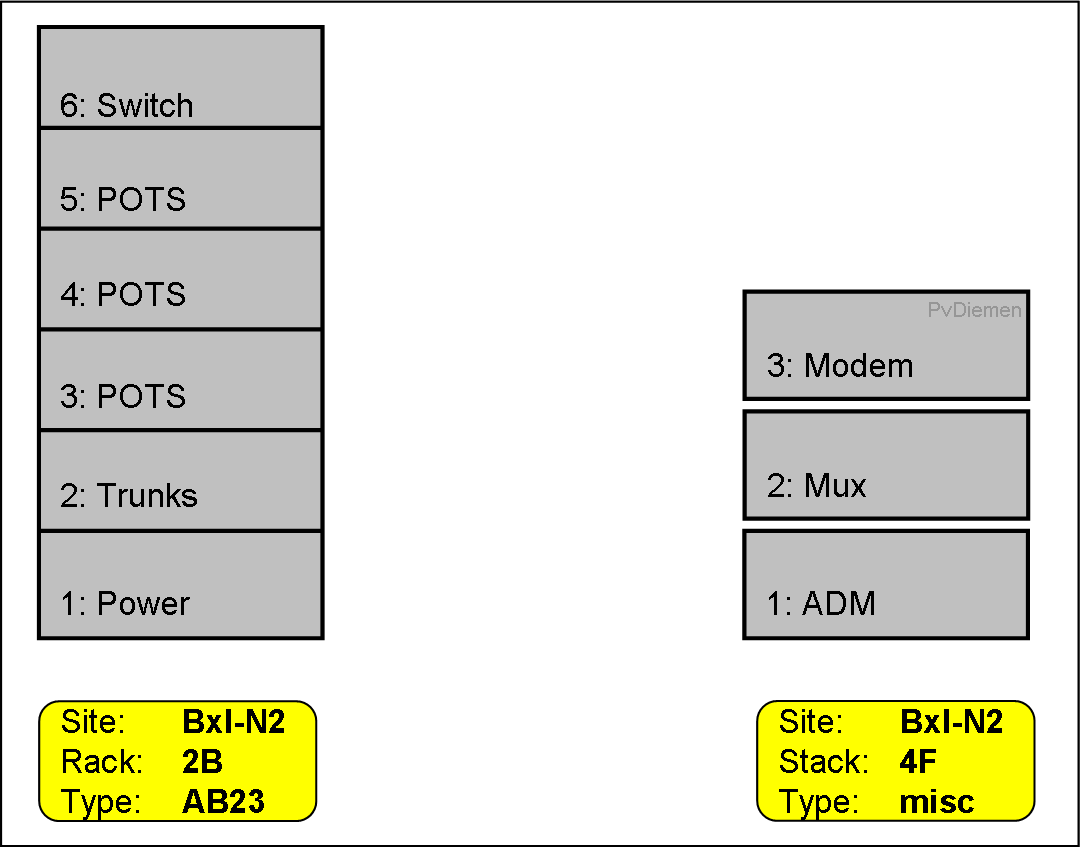
Subrack: Zooming-in on a subrack (sometimes called shelf) or a box:

Board: The last step is zoomed-in on a board. {Sometimes possible, of questionable use.}
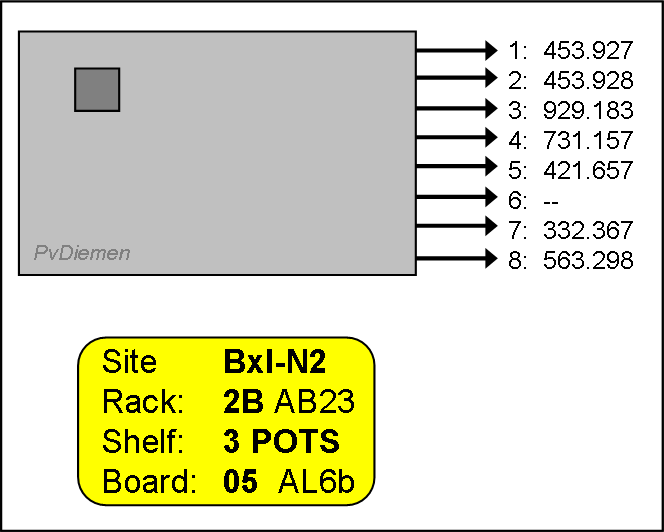
Next section: NML
Up to Contents
Up to Index
=O=